Michael hadn’t spoken a single word in almost two years.
Not since the accident. Not since the morning his father left home for work and never came back. Michael was only four when the car crash shattered his little world. He saw the ambulance lights, heard the sobs of his mother Clara, and then… silence. Not just outside. But within himself.
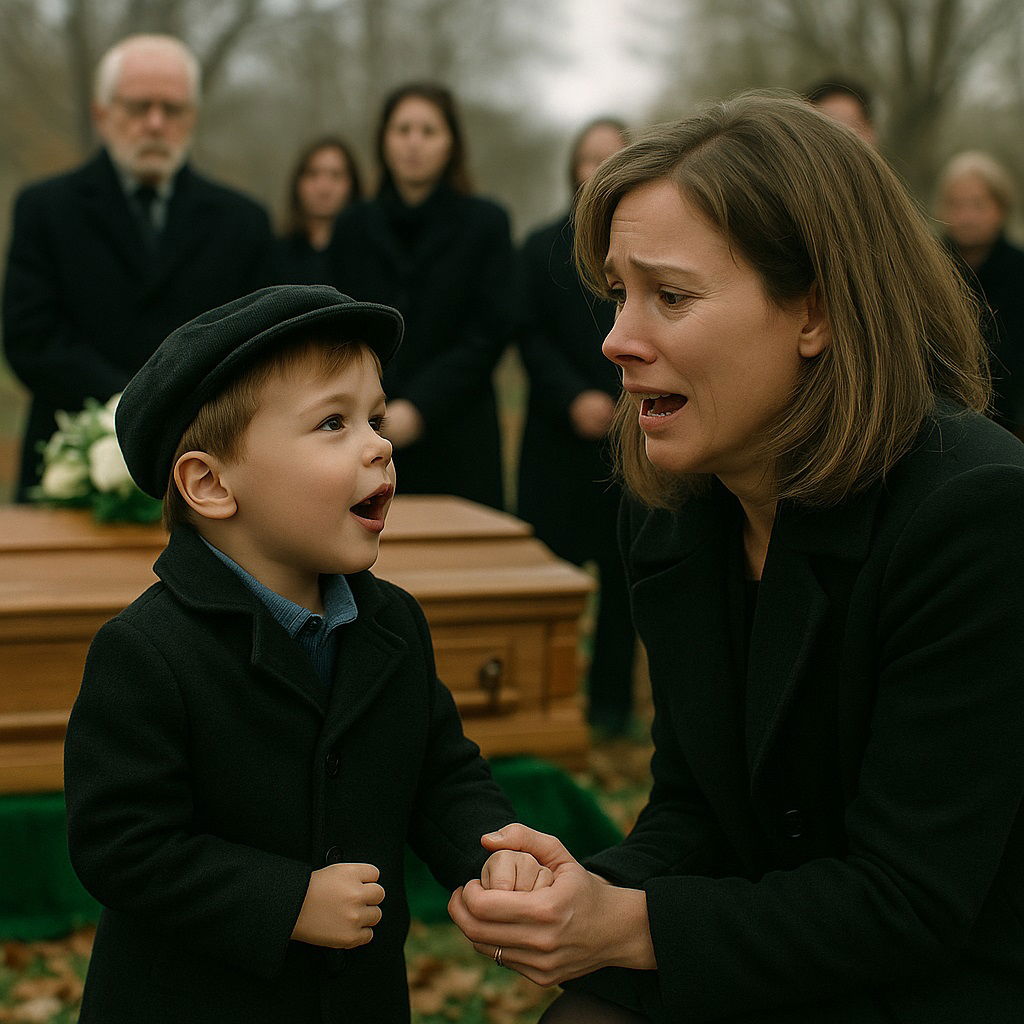
Doctors called it selective mutism, a trauma response. He wasn’t physically incapable of speaking—he just… didn’t. No one could force the words out of him. Therapists tried. Teachers waited. His mother prayed.
But it was Grandma Mary who believed.
She didn’t push. Didn’t plead. She simply showed up—every day—bringing a book, a smile, or a plate of chocolate chip cookies. She sat beside him on the porch swing and spoke to him as if he had always answered back. Sometimes she read fairy tales. Other times, she recited the stories of their family bakery, where she and Clara had kneaded dough and shaped dreams for decades.
“Words come when they’re ready,” she would say gently. “You don’t need to be afraid of them.”
Michael never responded. But he listened. And somehow, deep down, a fragile thread connected his silence to her voice.
Then one late-autumn morning, Mary didn’t show up.
Michael waited by the window. Noon passed. Then evening. When Clara came home with red eyes and trembling hands, Michael understood without needing to be told.
Grandma Mary was gone.
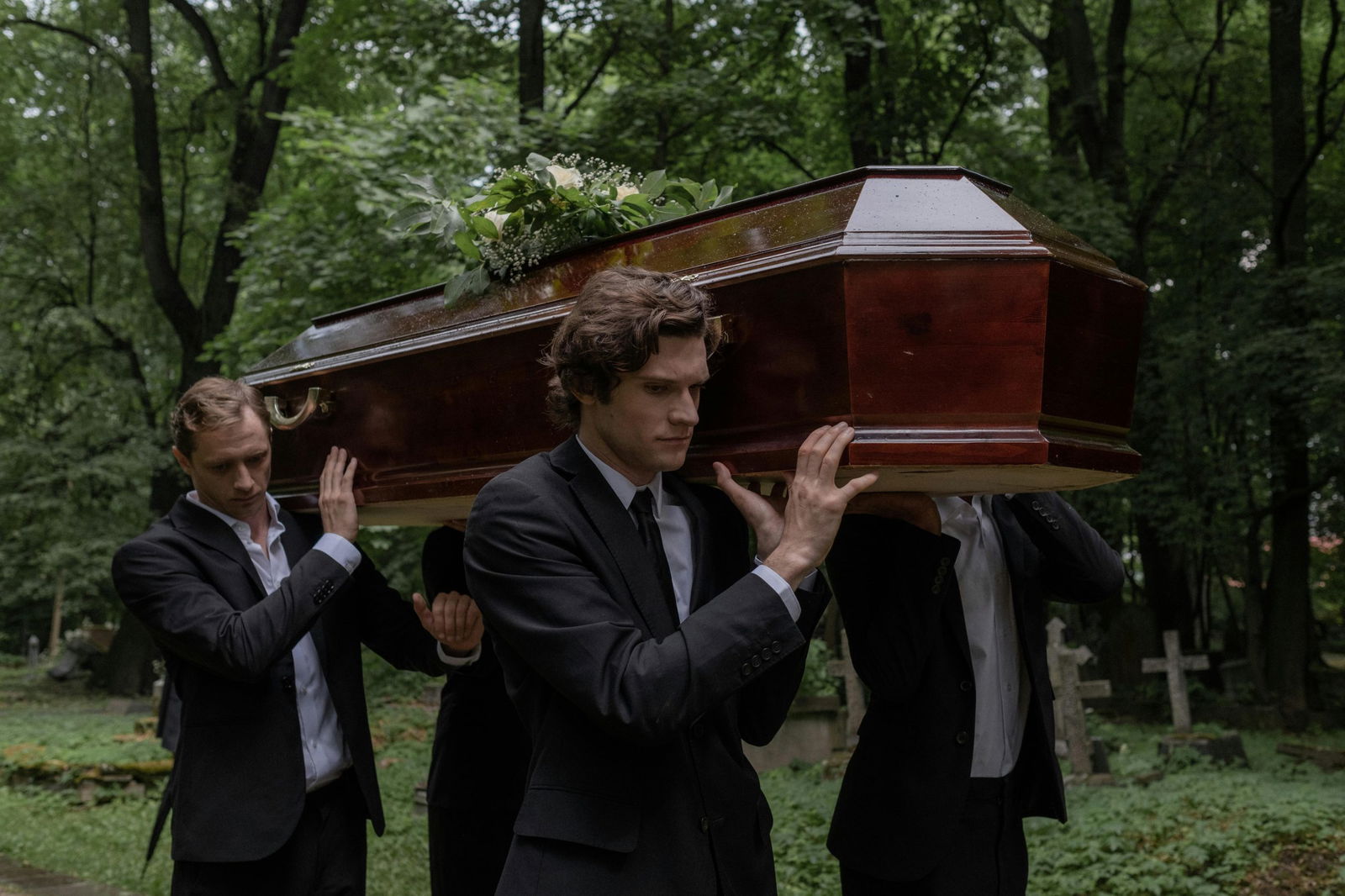
The wind carried a slight chill as it swept through Oakwood Cemetery. The trees stood bare, and the sky was gray—an appropriate canvas for grief.
Clara stood by her mother’s casket, her hands gently resting on Michael’s shoulders. He wore the navy-blue sweater Mary had knitted him last winter. He clutched a worn teddy bear under one arm, silent as ever, his eyes fixed on the wooden box slowly being lowered into the earth.
Clara couldn’t cry anymore. She had wept for hours the night before. But her son’s silence was heavier than any tear. There was no expression on his face. Just stillness. As if part of him had gone with his grandmother.
A few neighbors stood respectfully at a distance. The local priest read the final blessings, voice soft and reverent.
“And now, we commit Mary Dawson to the earth. A mother, a friend, a light to all who knew her.”
As the ropes groaned and the casket began its descent, Clara bent down to whisper, “Say goodbye, sweetheart. Just in your heart is okay.”
That’s when it happened.
Michael’s body trembled slightly. He let go of the teddy bear. His lips parted.
Then, clear and steady, he said:
“She’s still here.”
Everyone froze.
Clara’s eyes widened. Her knees nearly gave out.
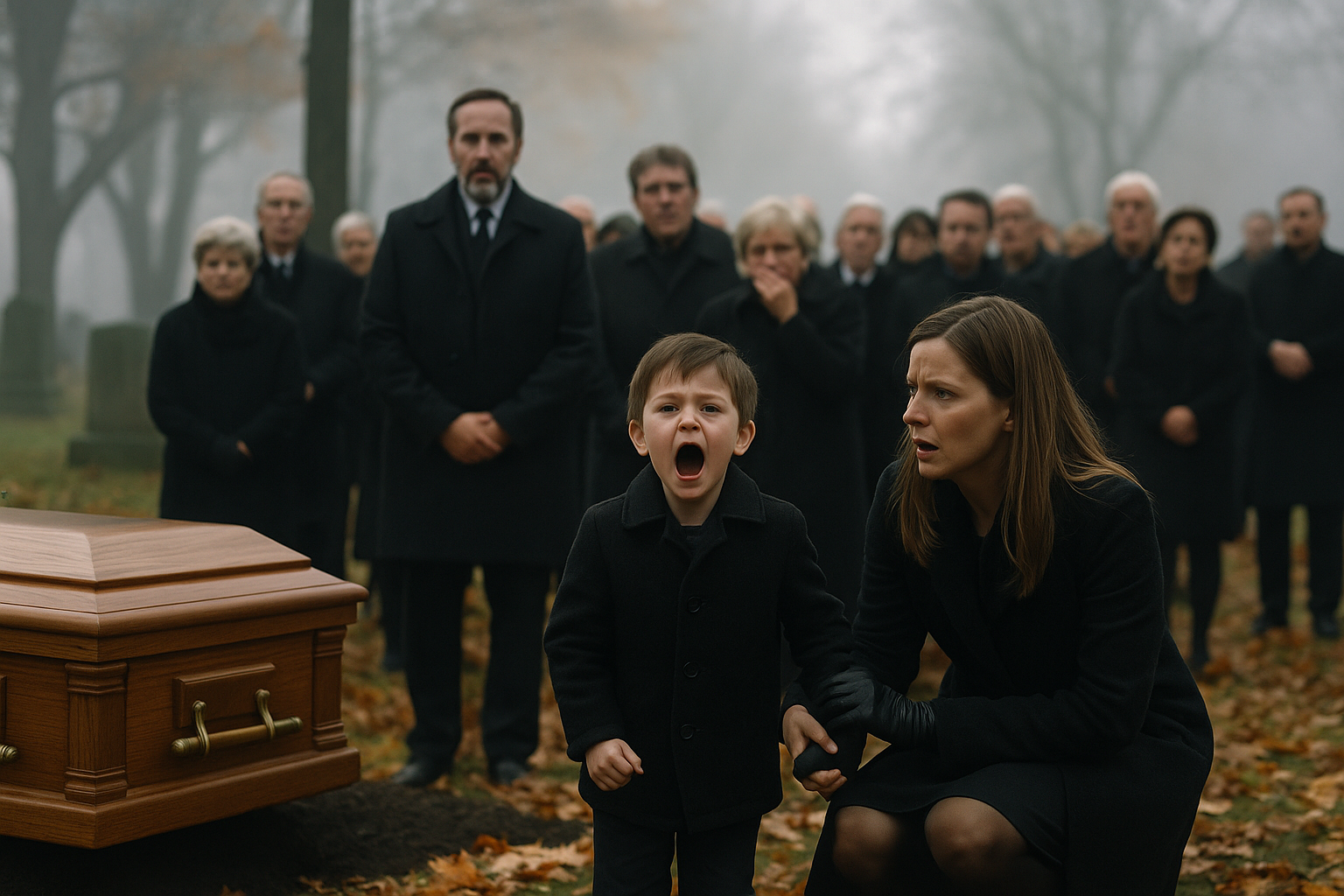
Michael looked up at her with eyes that shimmered, not with fear—but wonder. He reached out and took her hand.
“She’s holding my hand, Mommy. I felt her.”
The priest’s voice faltered. A leaf tumbled across the grass. All eyes turned to the boy who had not spoken in two years.
“I heard her,” Michael whispered. “She said… I don’t need to be afraid anymore.”
Clara sank to her knees and pulled him into her arms, sobbing—this time not from grief, but from awe.
There, at the edge of sorrow, something extraordinary had broken through.
Word of what happened at the funeral spread quickly.
Some called it a miracle. Others said it was Mary’s love reaching from beyond. But everyone agreed on one thing: Michael had spoken again—and not out of pressure or fear, but from hope.
Mrs. Carol, their elderly neighbor, baked a pie and brought it over the next day. “Your mother would be so proud,” she said, placing a hand over Clara’s. “He’s been so quiet, but maybe it just took the right moment.”
Clara smiled through her exhaustion. “It was her. He felt her.”
Later that night, Michael pulled out his colored pencils—tools he hadn’t used in months—and began to draw. First, it was a picture of him and Grandma Mary on the porch swing. Then one of the bakery, with the sun shining through its windows.
Every drawing was brighter than the last.
Clara reached out to Dr. Laura Matthews, a local child psychologist who had once said that Michael didn’t need therapy—he needed time, trust, and love.
When she saw Michael’s drawings and heard what he had said at the funeral, Dr. Matthews nodded gently. “This is healing. He’s telling the story his way.”
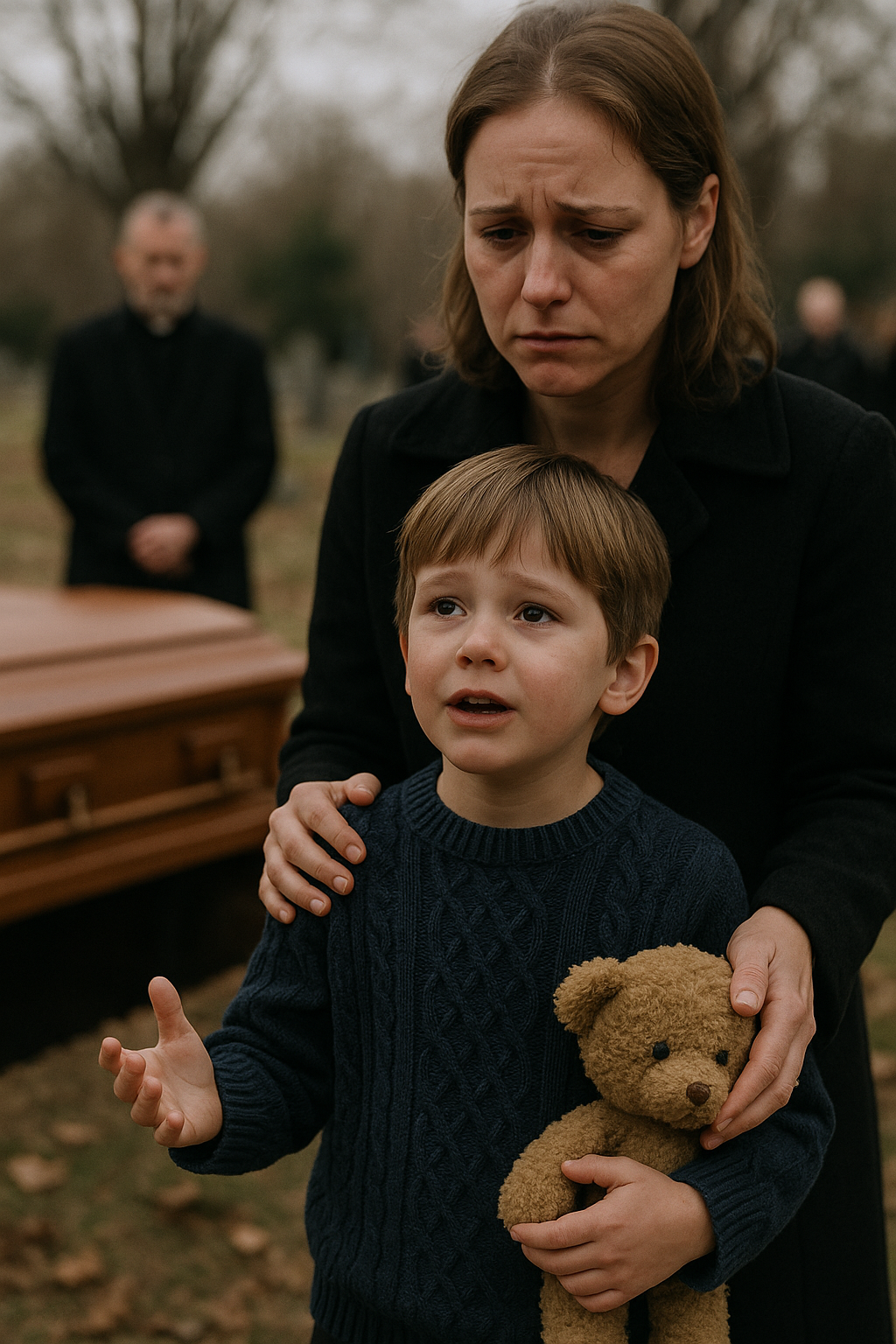
With a little help, Michael began to speak more—never much, but enough. He named his teddy bear “Chip,” after the cookies Grandma Mary used to bake. He described his dreams. He asked Clara, one evening, if they could read The Velveteen Rabbit again—his favorite story with Mary.
“I miss her,” he said simply.
“I do too,” Clara replied, brushing his hair back. “But you know what she told me once? That your voice was the most beautiful sound she ever heard—even when it was silent.”
Months passed. Spring came. The world bloomed again.
Clara stood before the old family bakery—“Dawson’s Delight”—its shutters long closed since Mary passed. The air still smelled faintly of flour and cinnamon. Michael stood beside her, now six, gripping a fresh drawing: it was of the bakery, with open doors and people smiling inside.
“Do you think we should open it again?” Clara asked.
Michael nodded. “For Grandma.”
They worked together—washing windows, painting the sign, testing old recipes. Neighbors donated time and tools. Dr. Matthews even hosted a “cookie painting” day for children in the village to honor Mary’s memory.
And when the doors finally reopened, Clara expected a small turnout.
Instead, the entire village showed up.

There were tears. Laughter. The smell of fresh bread. And near the register stood a wooden frame with a quote from Mary:
“Silence is not the absence of voice. Sometimes, it’s the beginning of something beautiful.”
Michael, wearing a white apron two sizes too big, stood on a stool and handed out cookies. Then, in front of everyone, he spoke clearly:
“I miss Grandma. But I’m not afraid anymore. And I’ll make cookies just like her.”
The room erupted in applause.
Clara used a portion of her mother’s savings to create the Mary Dawson Children’s Fund, helping kids dealing with grief and trauma express themselves through art and storytelling.
Michael’s story was later featured in a local newspaper: “The Boy Who Found His Voice at a Funeral.” His drawings became part of a traveling exhibit about childhood resilience.
And every evening, before bedtime, Clara and Michael would sit on the porch swing. Sometimes they talked. Sometimes they read. Sometimes, they were just quiet together.
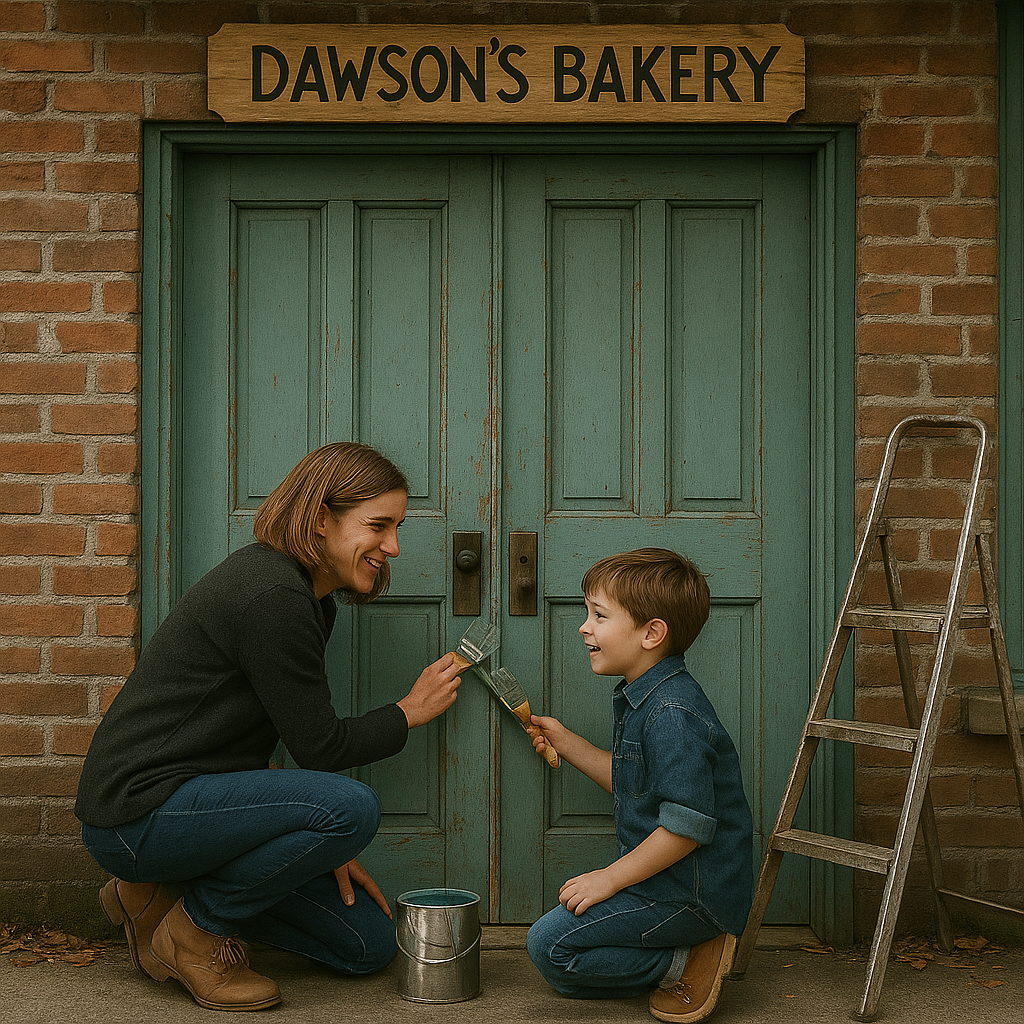
One night, Michael looked up at the sky and asked, “Do you think she still hears me?”
Clara smiled. “I know she does.”
Michael nodded. “Then I’ll keep talking.”
Years later, when Michael gave a short speech at his school’s art show, he finished with this:
“For a long time, I was scared to speak. But love doesn’t need volume. It just needs someone who believes in you. My grandma believed in me. That’s why I’m here.”
He was met with a standing ovation.
And somewhere, just beyond the applause and painted skies, the wind rustled the leaves of a nearby tree—like a whisper from a grandmother proud beyond words.
This work is inspired by real events and people, but it has been fictionalized for creative purposes. Names, characters, and details have been changed to protect privacy and enhance the narrative. Any resemblance to actual persons, living or dead, or actual events is purely coincidental and not intended by the author.


